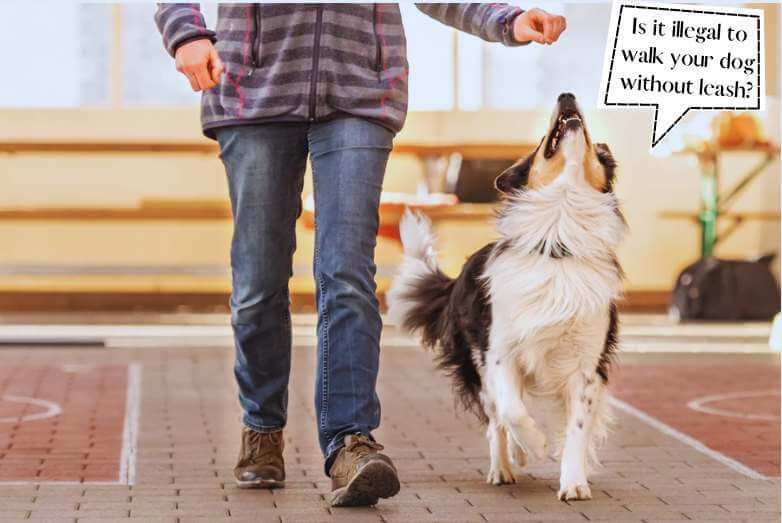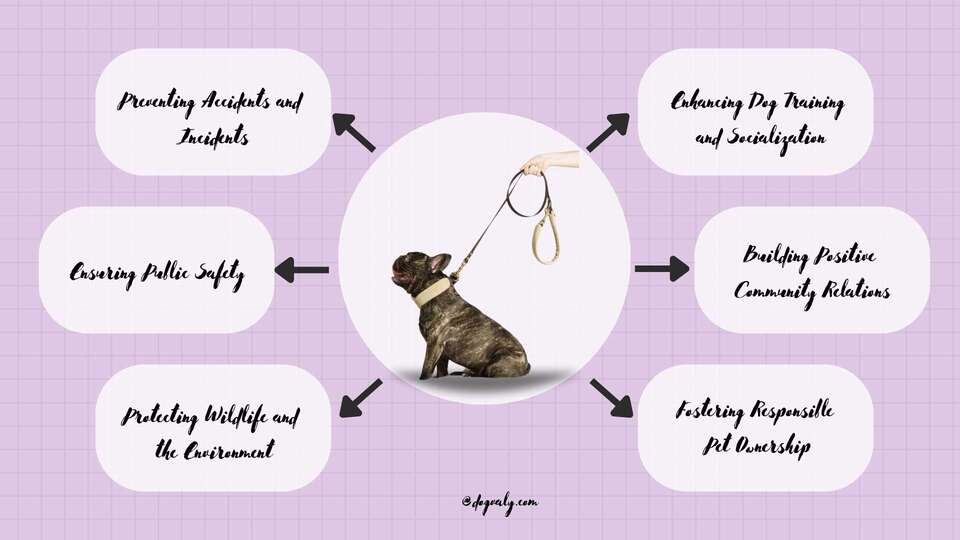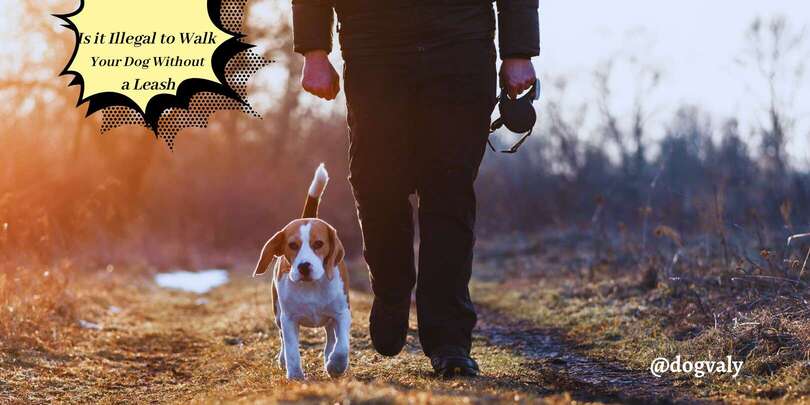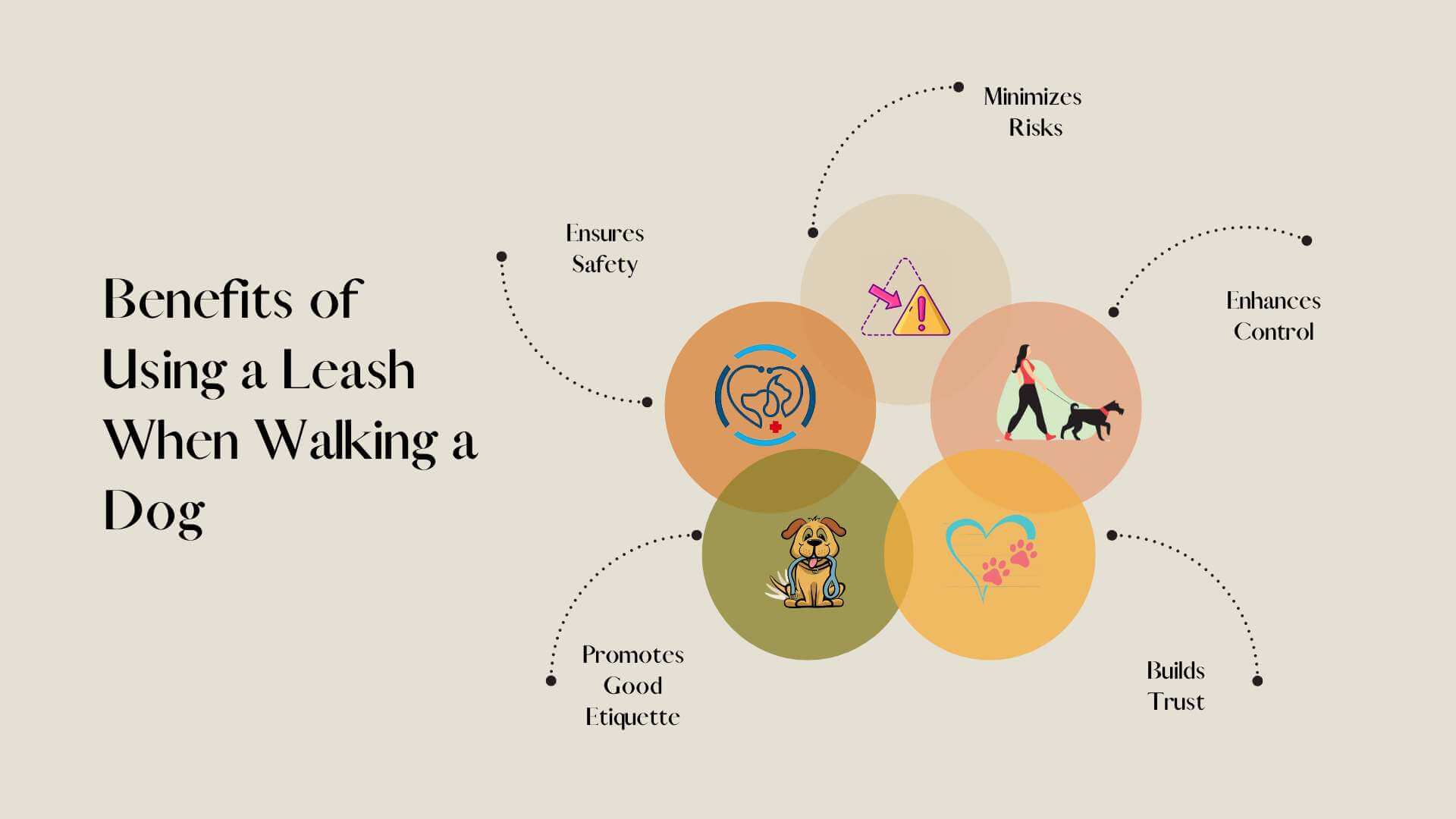Is it illegal to walk your dog without a leash :The Leash Dilemma
Taking your furry friend for a leisurely walk is a daily highlight for many dog owners. However, the question often arises: Is it illegal to walk your dog without a leash? In this article, we’ll delve into the topic and shed light on the legal aspects of walking your dog unrestrained.
Yes, it can be illegal to walk your dog without a leash in certain areas.
It is essential to have a firm awareness of the rules and laws that govern your specific place, even though it may be tempting to experience the thrill of seeing your four-legged companion walk freely in an open space. Leash laws vary from place to place, and it’s essential to comply with them to ensure the safety of your dog, other animals, and the community at large.

Overview of Leash Laws and Their Purpose
Leash laws are vital regulations implemented by local governments to safeguard the welfare and security of dogs, their owners, and the community. These laws mandate that dogs be leashed or restrained when in public spaces like parks, sidewalks, and streets.
The primary goal of leash laws is to prevent incidents that could harm dogs, humans, and other animals. Owners maintain better control over their behavior by keeping dogs on leashes, reducing the risk of aggressive encounters, bites, or injuries. Leash laws also promote responsible pet ownership and respect for public areas, demonstrating consideration for fellow citizens who may have fears, allergies, or preferences regarding interactions with dogs.
Moreover, these laws protect wildlife and the environment, preventing unleashed dogs from disturbing or damaging natural ecosystems. It’s essential to familiarize oneself with the specific leash regulations in their locality to ensure compliance and foster a positive relationship between pet owners and the community. By adhering to leash laws, dog owners exhibit responsible stewardship, prioritize safety, and contribute to the well-being of their beloved pets and shared surroundings.
Importance of Leash Laws and Dog Control

Leash laws and effective dog control measures play an important role in ensuring the safety and harmony of communities. Let’s explore the significance of these regulations and how they contribute to a better environment for both humans and dogs.
Remember, adhering to leash laws is a legal requirement and a responsibility that benefits everyone involved. By following these regulations, dog owners can help create safer, more harmonious communities while ensuring the well-being and happiness of their furry companions.
Is it Illegal to Walk Your Dog Without a Leash?
Understanding the legalities and regulations surrounding walking your dog without a leash is essential for responsible pet ownership. Let’s explore this topic further by considering some relevant factors and key points to keep in mind:

You demonstrate responsible pet ownership by being well-informed about leash laws and adhering to them. This not only ensures your dog’s safety but also promotes positive interactions with others and contributes to a harmonious community environment.
Walking dog without leash law by state
Understanding the leash laws for dogs in different states and countries is essential for responsible dog owners. To help you navigate the regulations and ensure compliance, here is a compilation of relevant leash law information for specific locations:
| Location | Leash Law Information |
| Florida | Dogs must be leashed when not on the owner’s property. Some counties have additional leash requirements or designated off-leash areas. |
| Kentucky | Dogs are required to be leashed when off the owner’s property, except in designated off-leash areas or during specific activities such as hunting. |
| Wisconsin | Dogs are generally required to be leashed when in public areas. However, some counties or cities may have specific leash regulations or designated off-leash areas. |
| Texas | Leash laws vary by city and county in Texas. In most areas, dogs are required to be leashed in public spaces, with some exceptions for designated off-leash areas or private property. |
| California | Leash laws in California typically mandate dogs to be leashed when in public areas, although certain locations may have specific leash regulations or designated off-leash areas. |
| Canada | Leash laws in Canada vary by province and municipality. Generally, dogs are required to be leashed when in public spaces, with some regions having designated off-leash areas. |
| Illinois | Dogs are generally required to be leashed when off the owner’s property in Illinois. However, specific leash regulations may vary by city or county, including designated off-leash areas. |
| United Kingdom | In the UK, the Control of Dogs Order 1992 requires dogs to be leashed when in public spaces, with a few exceptions such as designated off-leash areas or private land with permission. |
Please note that leash laws may be subject to change or have additional local regulations, so it’s important to verify the specific requirements in your particular area to ensure compliance with the law.
Other Locations Where It Is Illegal to Walk Your Dog Without a Leash
When it comes to walking your dog without a leash, it’s not just public spaces that have regulations. There are other locations where it is illegal to walk your dog unrestrained. Let’s explore some common areas and the reasons behind these leash requirements:
Schools & Universities:
Government Buildings & Facilities:
Commercial Properties:
Public Parks and Designated Areas:
Understanding and respecting leash laws in these various locations beyond public spaces is a key responsibility of dog owners. By adhering to these regulations, you contribute to the well-being and safety of those around you, fostering a harmonious environment in diverse settings.
Safety Concerns When Walking a Dog Without a Leash
When it comes to walking your dog, using a leash is crucial for safety. Let’s explore three significant risks that arise when dogs are allowed to roam unrestrained:
Risk of Dog Bites and Attacks:
Potential for Dog to Get Lost or Injured:
Disturbance of Wildlife or Other Animals:
By recognizing the importance of leashes and using them when walking your dog, you actively mitigate the risks of dog bites and attacks, make sure your pet is safe and secure and exhibit consideration for wildlife and the environment. It’s a responsible choice that promotes harmony, safety, and the overall well-being of your beloved companion and your community.
Benefits of Using a Leash When Walking a Dog
Using a leash when walking your dog offers numerous advantages that promote safety, control, and a positive experience for both you and your furry companion. Let’s explore the benefits in a concise and informative format:

By utilizing a leash, you prioritize safety, maintain control, and enhance the overall enjoyment of your dog walks. It’s an essential accessory that promotes responsible pet ownership and ensures a positive experience for both you and your beloved canine companion.
FAQ:
Why do leash laws exist?
Leash laws exist to ensure the safety and well-being of dogs, other animals, and the community. They aim to prevent incidents such as dog bites, aggressive behavior, accidents, and disturbances to wildlife. Leash laws also promote responsible pet ownership, respect for public spaces and help maintain harmony between dog owners and the community.
What are the consequences of walking my dog without a leash?
Walking your dog without a leash in areas where it’s prohibited can lead to various consequences. You may face fines, citations, or legal repercussions depending on the jurisdiction. Walking a dog without a leash also increases the risk of incidents such as dog bites, accidents, conflicts with other animals or people, and potential harm to your dog or wildlife.
Are there any exceptions to leash laws?
While leash laws are generally in place to ensure public safety and control, certain areas may have exceptions. Some jurisdictions have designated off-leash areas, such as dog parks or private properties, with specific permissions. Researching and familiarizing yourself with local regulations to understand any exceptions and ensure compliance with leash laws in your specific location is important.
Final thought
Understanding and adhering to leash laws is crucial for responsible dog ownership. Walking your dog without a leash can have legal consequences and pose risks to the safety of your dog, other animals, and the community. By following leash regulations, such as using a leash when walking your dog in public spaces, you not only comply with the law but also ensure the well-being of everyone involved. So, remember, when it comes to walking your dog, it’s important to ask yourself, “Is it illegal to walk your dog without a leash?” and make the responsible choice to keep your furry friend leashed.


